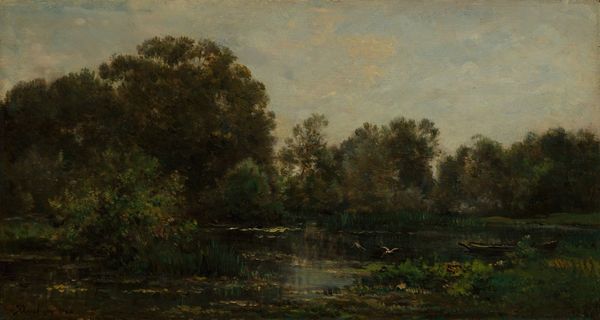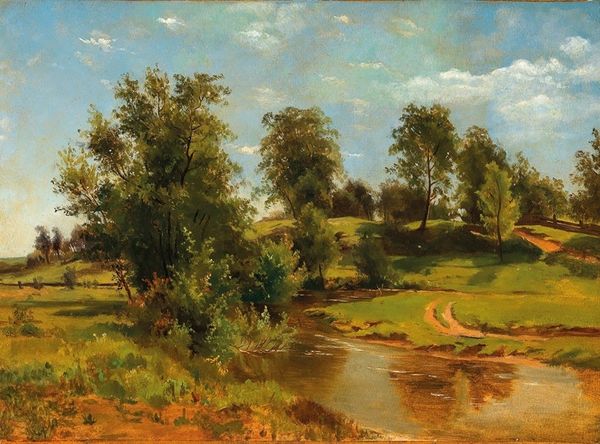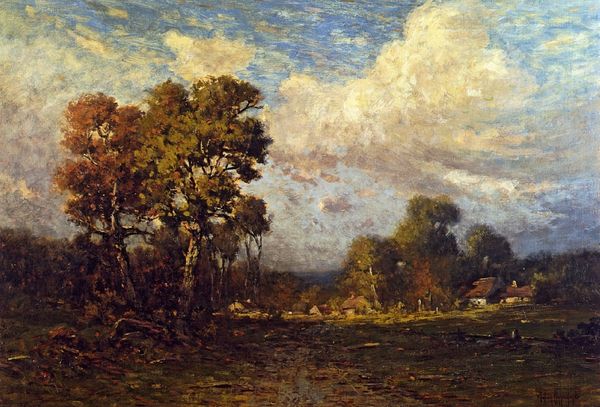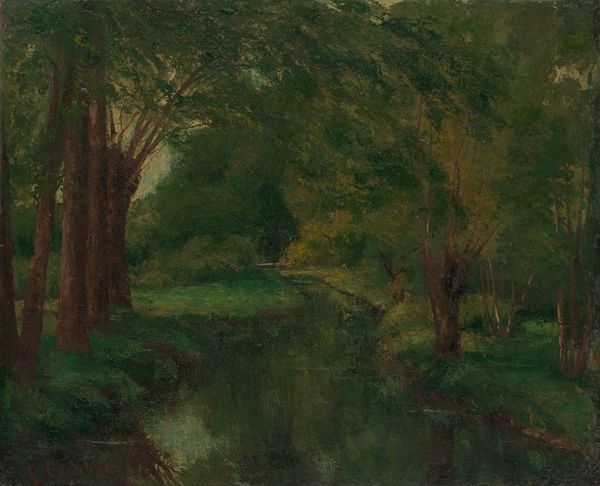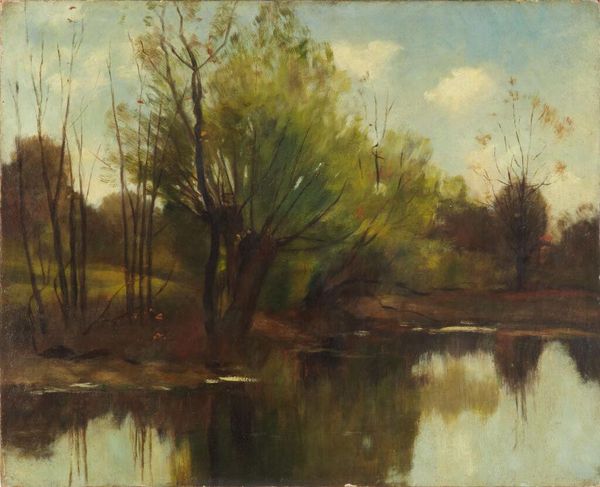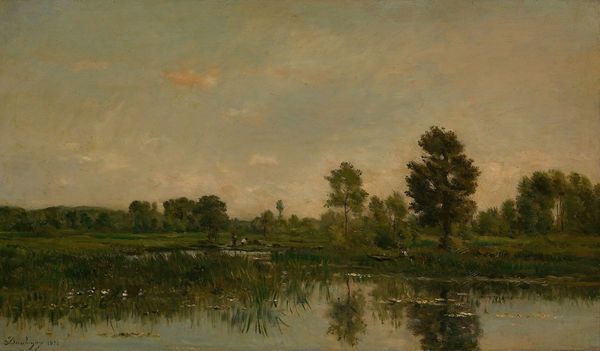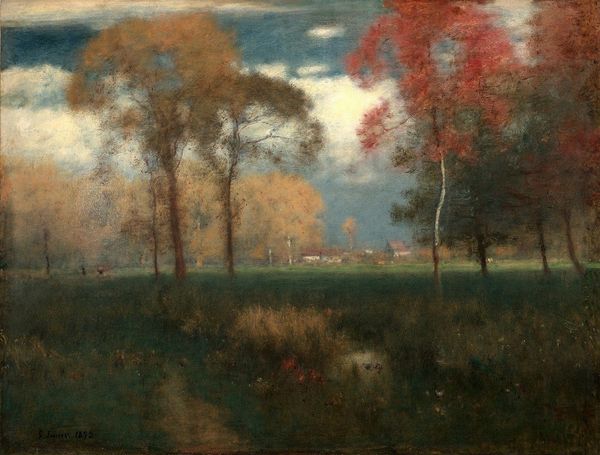
Copyright: Public Domain: Artvee
Curator: Just look at the scale of the paint application in George Inness’s “October,” dating to 1882. My first impression is almost visceral— the thick impasto, the contrasting planes... Editor: The density is really noticeable, isn't it? Inness’s use of oil paint is really striking here. It captures something quite specific, a temporal landscape reflective of the artist’s, and the country’s, spiritual moment. It evokes a certain longing for simpler agrarian past. Curator: Precisely! If we think about the physical properties of the paint itself, that thickness invites consideration, almost like raw pigment mashed straight from the tube. What kind of physical and manual labour was put to make those specific colour variations? You see the traces of its production in the brushstrokes. Editor: Agreed. It almost demands an interrogation of those themes! This work really sits within the post-Reconstruction era and industrial development in the US; and it could be framed as Inness expressing through the painted canvas a specific socio-political identity. Curator: Interesting! I'm wondering if the “October” title alludes to more than just an autumnal time frame? I am drawn into thinking of those particular materials being more abundant in certain geographic areas, the cost and production, that it's worth considering its class dimensions. What do you think of the figure in the right side of the picture, and her position related to labour practices? Editor: I think she’s almost allegorical. Her posture, framed against this vision of natural abundance… she almost stands in for a nostalgic imagining of feminine domesticity, a sharp counterpoint to, say, factory labor. Curator: Right, which brings us back to our consideration of the physicality of "October", and a reminder of its means of production, it does feel somehow urgent to reflect and resist our own forms of dispossession, whatever these are. Editor: Definitely. This landscape offers both solace and, perhaps unintentionally, a quiet call to recognize the forces that have shaped both our environment and social structures.
Comments
No comments
Be the first to comment and join the conversation on the ultimate creative platform.
